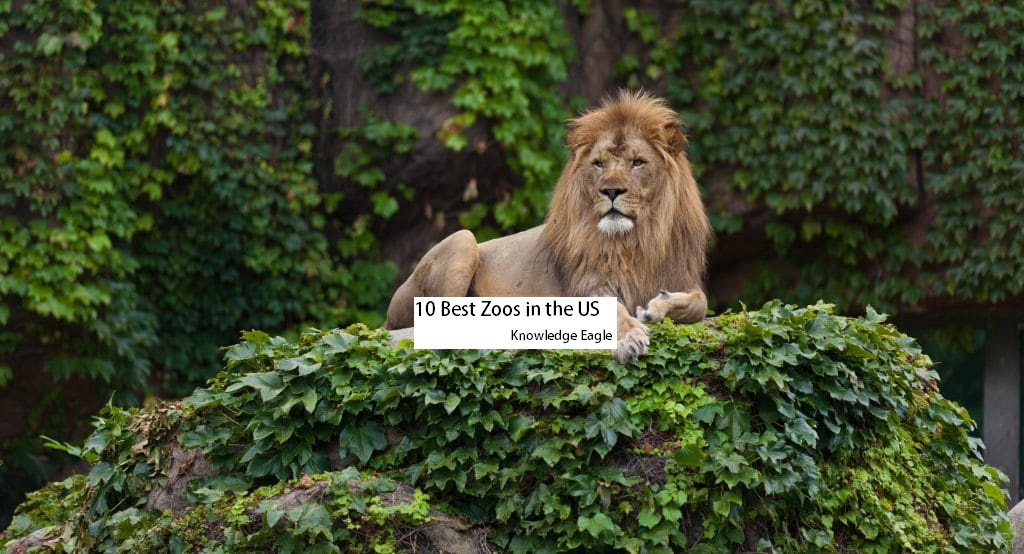Animal with Big Eyes: Lets Find Out Interesting Facts about 10 Animals with Big Eyes
Why Do Some Animal with Big Eyes?
The large eyes that are observed in animals are known to have more than just the beautiful purposes that capture the heart of many; they have evolved to suit certain needs in the survival of the species.
The foremost reason for the increase in the size of the eyes is the improvement of the low-light vision. Larger eyes are useful for gathering more light, which makes it easier to see in dark environments and perform such activities as hunting or even movement at night.
Furthermore, there are some advantages where large eyes are beneficial in offering a larger field of view where animals can be able to identify predators or food in the environment. For the other species, particularly those dwelling in the deep sea, animal with big eyes are more effective at picking up bio fluorescent signs or even the slightest motion in the almost total absence of light.
In the aspects of both aesthetics and practicality, the striking large eyes are a perfect example of the efficiency of the natural world.
Tarsier – 1

Scientific Name: Tarsius spp.
Type of Animal: Mammal
Where Found: Forests of Southeast Asia, particularly in, Borneo, Philippines and Sumatra.
Tarsiers stand out among primates because this animal with big eyes have much larger eyes than their brains. These tiny creatures live in treetops and use their enormous eyes to find food even when the light is low. They feed mostly on insects and are most active at night. Their night time activities rely on the absorption of photons, which is made possible by the size of their eye organs.
Interesting Fact: Tarsiers, like owls, have to move their heads to perceive their surroundings because their eyes in the skull are stationary. They can turn their heads in either direction nearly completely.
Galago – 2

Scientific Name: Galagidae family
Type of Animal: Mammal
Where Found: Sub-Saharan African forest and savanna ecosystems.
Galagos are diminutive primates with very nimble bodies and eyes that, when illuminated by a torch, produce a brilliant halo. Because they spend much of their time at night hunting insects and navigating between trees, they have developed special eyes that help them see clearly even when the light is out. Their common name comes from the melancholy sounds they make while sleeping, which sound like a baby crying.
Interesting Fact: Animals that live in the bush have remarkable jumping skills when they are young. Their powerful hind legs allow them to leap up to 7.4 feet, or 2.25 meters, in the air. Moreover this animal with big eyes has more advantage at night haunting.
Northern Saw-Whet Owl – 3

Scientific Name: Aegolius acadicus
Type of Animal: Bird
Where Found: For the whole continent of North America, you may find forests.
While owls in general are charming, the Northern Saw-whet Owl stands out as one of my favorites. This small owl gets its name from the way it toots its beak repeatedly, making a sound that sounds very similar to a saw being sharpened. The large, round eyes, which are golden in color, stand out on its face. Their enhanced night vision is a result of their raised rod-to-cone ratio, which allows them to detect even the tiniest movements of prey beneath the forest floor.
Interesting Fact: Even though their large eyes let them see better in low light, they can’t remove them from their sockets. To get around this, owls have evolved additional cervical vertebrae that let them turn their heads up to 270 degrees, giving them a wide field of view.
Sugar Glider – 4

Scientific Name: Petaurus breviceps
Type of Animal: Mammal
Where Found: Native to Australia (both the east and the north), New Guinea, and the islands nearby.
The sugar glider is an easily recognizable marsupial with large, black eyes and a slender membrane called a patagium that it uses to glide deftly between trees. In its nighttime habitat, the sugar glider uses its enormous eyes to find food sources including insects, sap, and honey. Their lively personality and striking irises make them a favorite among exotic pet enthusiasts.
Interesting Fact: Their name may be “gliders,” but these animals can’t really glide. They move with pinpoint precision and can leap more than 150 feet in a single bound thanks to their patagium, which they use as a navigational aid.
Chinchilla – 5

Scientific Name: Chinchilla lanigera and Chinchilla chinchilla
Type of Animal: Mammal
Where Found: Originally from the South American Andes Mountains, this species is now common in homes all around the world..
Because of their small, fluffy fur and large, black eyes, chinchillas are inherently attractive. The Andes’ stony and arid alpine habitats have provided the perfect home for these nocturnal rodents.
Their very big pupils help them find food and evade predators during the twilight hours, when light levels are low. Because of their gentle nature and natural inquisitiveness, chinchillas have gained popularity as pets all around the globe.
Interesting Facts: When infested, chinchilla fur can suffocate fleas and other parasites. To keep their plush coats in pristine condition, chinchillas take dust baths. As part of their bathing ritual, they scrub their coats with fine volcanic ash that absorbs oils.
Japanese Flying Squirrel – 6

Scientific Name: Pteromys volans orii
Type of Animal: Mammal
Where Found: Japan’s forested areas
The Japanese flying squirrel spends its nights scurrying around trees. The enormous eyes help the species traverse its nighttime environment. This creature’s irises let it spot distant predators and identify food sources. Because of its large tail, velvety fur, and lovely eyes, this creature is frequently thought of as one of the most fascinating in the animal kingdom.
Interesting Facts: The mere fact that their name contains the word “flying” does not prove that they are capable of flight. Gliding smoothly between trees, frequently reaching large distances, these animals, like sugar gliders, possess a patagium, a membrane.
Peacock Mantis Shrimp – 7

Scientific Name: Odontodactylus scyllarus
Type of Animal: Crustacean
Where Found: Tropical waters define the Indian and Pacific Oceans.
The Peacock Mantis Shrimp’s striking look is due to its multicolored body and large, expressive eyes, even though it isn’t often “adorable” like fluffy animals. The mantis shrimp has some of the most complex eyes in the animal kingdom, with pupils that are among the most advanced in the animal kingdom. They can see ultraviolet light in addition to ten times the Interesting Facts: There is no fish in nature with a more devastating strike than the Peacock Mantis Shrimp. They hit the tank with the force of a missile, shattering the glass.
Ring-Tailed Lemur – 8

Scientific Name: Lemur catta
Type of Animal: Mammal
Where Found: Madagascar.
The Ring-tailed Lemur, with its strikingly big, amber eyes, stands out even among other lemurs. They utilize their large eyes for both daytime and nighttime activities, from foraging for fruits to socializing in troops. Their expressive eyes, combined with their iconic striped tails, have made them one of the most recognized and beloved species of Madagascar.
Interesting Facts: While they are primates, lemurs belong to a unique lineage separate from monkeys and apes. The isolation of Madagascar allowed lemurs to evolve in diverse ways, resulting in over 100 different species!
Fennec Fox – 9

Scientific Name: Vulpes zerda
Type of Animal: Mammal
Where Found: North African deserts and Sinai peninsula of the Middle East are examples of such areas. Let me introduce you the cute Fennec Fox, which has large ears and big, dark eyes, which makes it look like a creature from a fairy tale. Its large eyes are perfect for the nocturnal lifestyle of the animal as it can hunt for food even at night.
Apart from assisting in night-vision, these big, beautiful eyes also contribute to the elegance of the fox and make it a much-loved object of admiration among fans of wildlife.
Interesting Facts: No, those big ears are not just for looks; they aid in heat dissipation to keep the Fennec Fox cool in the desert heat. They also serve as highly effective sonic dishes that can detect even the slightest vibrations of the prey.
Slow loris – 10

Where Found: Southeast Asia’s tropical and subtropical regions.
The large, wide eyes of the slow loris, a primate that lives at night, give it an innocent appearance and captivate onlookers. Slow lorises are able to use their vision to navigate their environments in low light and identify potential prey. These animals have a poisonous bite, which is unusual among mammals, but makes them adorable all the same.
Interesting Fact: The slow loris’s venom is made by glands on the inside of its elbows. This toxin can be secreted onto their fur for defense or mixed with saliva to create a lethal bite.
Conclusion
The animal with big eyes has always been a source of wonder and interest, due to its striking looks and other features that make it stand out.
This animal with big eyes has been loved by so many people and has been the inspiration of many arts, literature and even folklore. This can be seen across different ecosystems and it has been of utmost importance in the conservation of the environment.
Unfortunately, the animal with big eyes is not without its struggles; these include issues with loss of habitat, climate change, and hunting. It is therefore important that much effort is made to conserve this unique species so that future generations may also have the privilege of admiring it.
Thus, the animal with big eyes is not just a representative of some kind of beauty; it is a perceive of great struggles, a survivor and a definitive proof of the symbiotic relationship between living things.
For more information visit Home page



